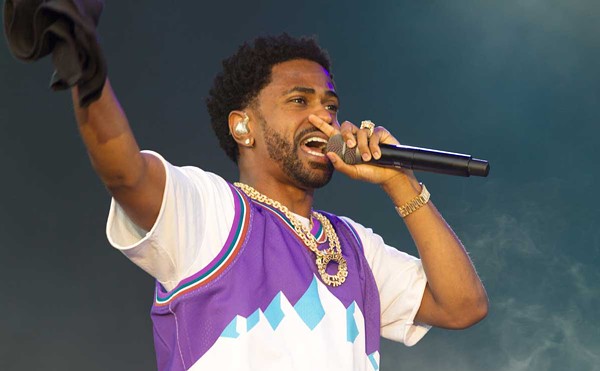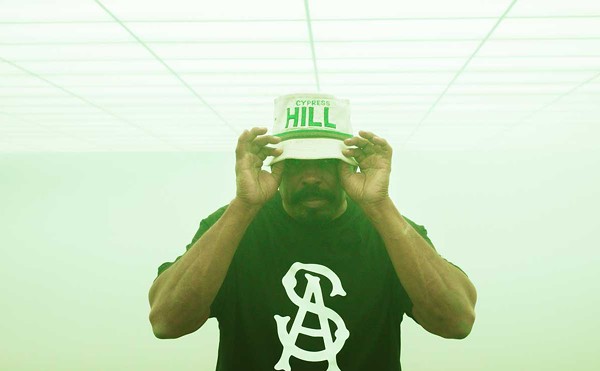John Colbert sits at a table inside Baker’s Keyboard Lounge, the club he co-owns. He’s riffling through a brown leather briefcase. Sitting across from him is jazz historian Jim Gallert, a guy who has patronized Baker’s for 30 years. They’re discussing the final arrangements for the club’s 70th Anniversary celebration: four days of stellar shows and an awards ceremony.
Colbert pulls the musician bios he’s been searching for from the briefcase. He hands them to Gallert and tells him to revise the one for Donald Byrd, one of the featured acts. Then he leaves us at the table. Gallert tells me they have been laboring to ensure the celebration’s success.
The jazz historian says he’s awed by the improvements Colbert and Juanita Jackson have made since purchasing Baker’s in 1996. And he’s right. The new owners have modernized the club. They dropped the cover charge, expanded the seating from 99 to 120, started serving soul food, initiated a weekly jam session, and booked the best local jazz talent. Waiting for 45 minutes to get a seat isn’t uncommon.
“He’s taken a club that has a great atmosphere, that’s already known and is a loved jazz club, and he’s stocked it with local talent,” explains Gallert.
Gallert says Colbert has the same business acumen and passion for jazz as original owner Clarence Baker, who passed away last year.
“At first I thought that he was continuing a tradition, but I see now that he has created the beginning of his own tradition, which is another page or another chapter in the book of Baker’s history.”
Historical relevance
Colbert returns with the club’s original purchase agreement, dated May 24, 1934. He spreads it on the table and begins a history lesson about the Keyboard Lounge as told to him by Clarence Baker.
Clarence’s mother Frances Baker purchased the then-restaurant and the adjoining gas station at West Eight Mile and Livernois in 1934 for a whopping $500. (Frances had the strongest credit rating in the family.) The Bakers put $250 down and made $50 monthly payments. They initially planned to name the eatery Barbeque & Lunch, but later settled for Baker’s Restaurant.
During the day, business boomed, but at night it was empty. In 1939, Clarence encouraged his parents to offer live entertainment to boost business. They agreed, and the young Baker became the entertainment director, and soon took over daily operations when the business became difficult for his aging father, Chris.
Clarence sold the gas station and immediately transformed the venue.
Kay Baker, Clarence’s widow, tells me later that he quit Eastern Michigan University to help out with the restaurant. Kay worked as a coat checker at Baker’s in the mid-’70s and, with her first husband had frequented the club regularly since the ’50s. Clarence and Kay married in 1997.
“Clarence used to visit the clubs in New York and Chicago, and he discovered that they were doing well by offering jazz,” Kay says. “He learned that jazz was what people wanted.”
Clarence initially booked solo pianists before giving a permanent gig to Pat Flowers, whose style recalled Art Tatum. Flowers was a hit — had people waiting in line outside to hear him — and he convinced Clarence to change the name to Baker’s Keyboard Lounge. Flowers stayed on from 1940 to 1954. After he quit, Clarence started hiring jazz trios and quartets.
In the early ’50s, Baker’s began featuring more hard-bop style jazz. Clarence booked top jazz musicians, including pianists Art Tatum, Tommy Flanagan, Les McCann, Barry Harris, trumpeter Chet Baker, organist Jimmy Smith, guitarist Kenny Burrell and saxophonists Yusef Lateef and Sonny Stitt. Baker’s gained a solid rep as an upscale lounge while other Detroit jazz clubs at the time were considered blue-collar and bohemian hangouts.
“Look at all the great clubs that Detroit has had: the Minor Key, the Blue Bird Inn and the World Stage,” says Gallert. “They are nonexistent today. Jazz clubs in general seem to have a short life span. Maybe it’s because of economics. But the important thing was Clarence was shrewd enough to keep this place going. He knew how to make it work.”
Moreover, musicians felt welcome at Baker’s. Bassist Don Mayberry remembers the impact it had on him:
“I grew up two blocks down the street. So I remember as early as 13 or 14 walking there and looking at the marquee with Redd Foxx and Sarah Vaughan’s name on it. At the time, I was an aspiring bass player. I was too young to go in there legally. My father was a great lover of the jazz, and he knew some of the people that worked there. Sometimes when there were musicians that I really wanted to see they would sneak me into the dressing room, but they would never let me onto the floor. Backstage I had an opportunity to get pointers from musicians like bassists Ron Carter, Charles Mingus and Sam Jones. It was a very nice and wonderful time for me.” In 1980, Mayberry debuted at Baker’s with vocalist Dennis Rollins.
Detroit native and legendary jazz singer Sheila Jordan remembers forging a birth certificate to get inside. She was 15. Though she never headlined, she did sit in with Tommy Flanagan and Kenny Burrell.
“If you got accepted there you were on top,” remembers Jordan. “I was a kid and I had a lot of nerve to get up there and do what I loved. But they were very kind to me. Clarence said to me once, ‘Kid you have a lot of soul.’” (Jordan finally gets to headline on May 1, Day 1 of Baker’s anniversary celebration.)
Time for a change
Around 1963, Clarence had opened the Act VI in Detroit’s New Center area, and he managed both clubs. Soon after, he was stricken with throat cancer, and was forced to undergo radiation therapy. Hence his decision in 1964 to lease Baker’s to saxophonist Solly Hartstein, a club regular.
Hartstein all but stuck with Baker’s established booking formula — occasional forays into comedy were unsuccessful.
Bert Myrick, then Baker’s house drummer, says Hartstein treated the musicians as equals. Myrick himself got his big break at Baker’s as replacement drummer for pianist Red Garland and went on to work with Chet Baker, Sonny Stitt and Dexter Gordon.
“To him all musicians were his family,” he says. “After the completion of a date we would all go over to Solly’s house and have a big party. It was just beautiful.”
In the meantime, Clarence’s radiation treatments were somewhat successful and he resumed work. But the 1967 riots had hurt business so much that he was forced to sell the Act VI.
When Hartstein retired to Florida in 1974, Baker’s fell back into Clarence’s control. Throughout that decade, the club remained popular.
During the ’80s, Clarence had leased Baker’s numerous times. He was keen to retire. The cancer had resurfaced, which led to five more operations.
In the early ’90s, Clarence leased Baker’s one last time to Roy Jackson, an accountant whose nightclub experience was minimal. Jackson ran the place for a year before Clarence reclaimed it. Repairs were necessary, and for three months the place was closed.
In 1996, he sold his club for good. Baker died in 2003 from complications caused by cancer. He was 93.
Colbert remembers wanting the club immediately after seeing it: “Juanita was a former bar owner, and she wanted to return to the business. So she had me seek out businesses that were for sale. I searched the newspaper and saw that Baker’s was for sale. We made an appointment with Clarence to see the club. When we saw it we immediately decided to buy it. He had other offers. But he turned them down because they were going to turn it into something other than a jazz club.”
Clarence liked Colbert straight away and was excited by his plans for the club, which included a focus on locally based jazz acts. Because of Baker’s size, the national shows were not as cost-effective as they once were.
“He knew that it would be difficult for me to bring in national and international acts the way that he did during Baker’s heyday, meaning the period between 1950 through 1970,” says Colbert. “He knew that it would be impossible.”
Colbert booked local musicians such as the trumpeter Dwight Adams, pianist Teddy Harris, drummer George Goldsmith, organist Gerard Gibbs, and trumpeter Louis Smith. He also brought in nationals, trumpeter Donald Byrd, saxophonist James Carter and pianist Carlos McKinney among them. Colbert reconditioned the original piano that Art Tatum had picked out.
“Certainly to have a jazz club operating for 70 years in any place in the world is nothing short of amazing,” says Gallert. “Baker’s always had a sense of permanence — perhaps in part because of the location, and because it wasn’t subject to a lot of destructive influences. …”
If other clubs suffered short life spans, then Baker’s might have had nine lives. Like Clarence, and Hartstein before him, Colbert understands that shrewdness, as well as an unyielding passion for jazz, and respect for musicians, is necessary for success.
Charles L. Latimer writes about jazz for Metro Times. Send comments to [email protected]




